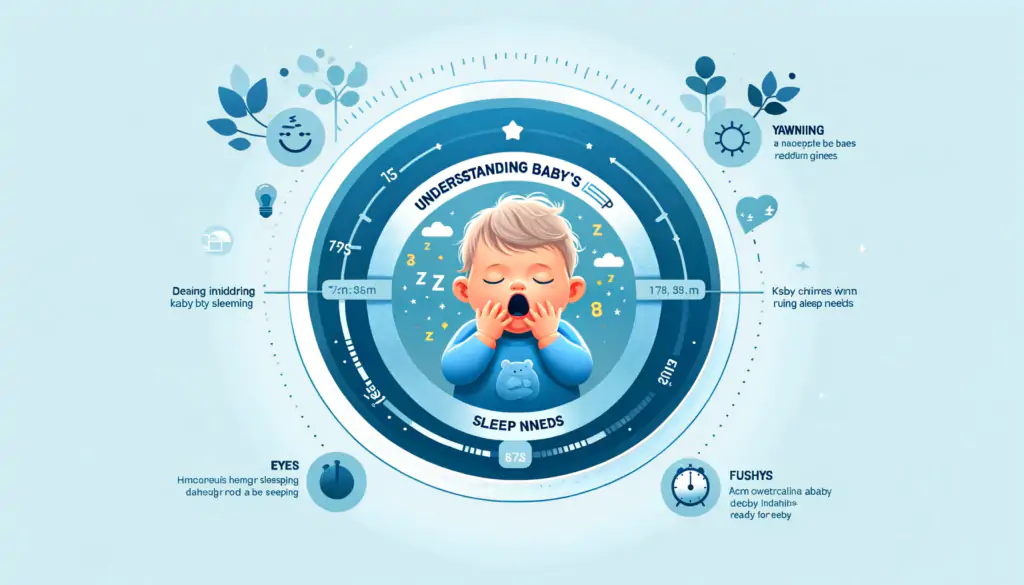How to Put a Baby to Sleep in 40 Seconds: 7 Dynamic Steps

Table of Contents
Understanding Baby’s Sleep Needs before getting to know How to Put a Baby to Sleep in 40 Seconds
As new parents or caregivers, comprehending a baby’s sleep needs is vital in ensuring their overall well-being. Babies, especially newborns and infants, have distinct sleep patterns that differ significantly from adults. Recognizing these patterns is the first step in mastering the art of putting your baby to sleep swiftly. In this blog we will understand How to Put a Baby to Sleep in 40 Seconds
Sleep Cycles of Babies
Babies typically have shorter sleep cycles than adults. During these cycles, they fluctuate between light and deep sleep phases. Understanding these cycles can help caregivers recognize when a baby is in the lighter phase of sleep, which is the optimal time to encourage sleeping.
Recognizing Sleepy Signals
Babies often display signs indicating they are ready for sleep. These signs include:
- Rubbing eyes
- Yawning
- Fussiness
- Staring blankly
Recognizing these signals early can help in initiating sleep routines more effectively.
The Importance of Naps
Naps are an integral part of a baby’s sleep schedule. They help in ensuring that babies are not overtired by bedtime, which can make it harder for them to fall asleep. A well-rested baby is more likely to sleep faster and more soundly.
Understanding your baby’s sleep needs and recognizing their signals for sleep are crucial steps in helping them fall asleep quickly and safely.

Preparing the Sleep Environment
Creating an ideal sleep environment is paramount in the quest to put a baby to sleep in 40 seconds. A comfortable and secure setting not only soothes the baby but also signals that it’s time for rest.
The Ideal Sleep Setting
The room where the baby sleeps should be designed to enhance sleep. Here are key elements to consider:
- Darkness: Use blackout curtains to keep the room dark, mimicking nighttime conditions even during naps.
- Temperature: Maintain a comfortable room temperature, typically around 68-72°F (20-22°C), to prevent overheating.
- Noise: Minimize external noise. White noise machines can be beneficial in creating a consistent and calming background sound.
- Safety: Ensure the crib or bassinet is free from loose bedding, toys, or bumpers that could pose a risk.
Sleep-Enhancing Products
Several products can aid in creating a soothing sleep environment for babies:
- White Noise Machines: These can mimic sounds from the womb, providing a familiar and comforting auditory backdrop.
- Comfortable Mattresses: A firm mattress with a fitted sheet ensures safety and comfort.
- Swaddling Blankets: Swaddles can provide a sense of security, mimicking the snugness of the womb.
Light and Sound Considerations
Soft, dim lighting can be calming, signaling to the baby that it’s bedtime. Gentle, rhythmic sounds or lullabies can also be helpful.
An optimal sleep environment that is dark, quiet, and safe is crucial for quickly putting a baby to sleep. Ensuring the right room conditions can significantly improve the baby’s ability to fall asleep swiftly.

The Tissue Trick
One of the most popular and easy-to-implement methods for putting a baby to sleep in 40 seconds is the tissue trick. This gentle method has garnered attention from parents worldwide for its simplicity and effectiveness.
How to Perform the Tissue Trick
- Gentle Touch: Use a soft, dry tissue.
- Gentle Strokes: Lightly drag the tissue across the baby’s face, particularly the forehead.
- Repetition: Repeat the motion gently until the baby’s eyes start to close.
Why It Works
The tissue trick is believed to be effective due to its soothing properties. The light touch of the tissue mimics a comforting, tactile sensation, helping the baby relax and drift off to sleep.
Safety Considerations
- Never leave the tissue on the baby’s face: Ensure it’s only used for gentle strokes.
- Use a clean, dry tissue: Wet tissues or wipes are not suitable for this method.
The tissue trick is a simple, yet effective way to put a baby to sleep quickly. It requires minimal preparation and can be a go-to method for many parents. However, always prioritize the baby’s safety while using this method.

Swaddling and Soothing Sounds
Swaddling combined with soothing sounds forms a powerful duo in quickly putting a baby to sleep. This method leverages both the comfort of a snug embrace and the calming effect of auditory cues.
The Art of Swaddling
Swaddling involves wrapping the baby in a blanket to mimic the snugness of the womb. Here’s how to do it effectively:
- Choose the Right Blanket: Use a lightweight, breathable swaddling blanket.
- Proper Technique: Lay the blanket in a diamond shape, fold the top corner, and place the baby in the center. Wrap the sides snugly around the baby, leaving enough room for hip movement.
- Safety First: Ensure the swaddle is not too tight. The baby’s head should be uncovered, and they should be able to breathe comfortably.
Incorporating Soothing Sounds
Soothing sounds, such as white noise or lullabies, can greatly enhance the swaddling experience:
- White Noise: Mimics the sounds heard in the womb, providing a familiar auditory environment.
- Lullabies: Gentle, rhythmic melodies can be comforting and aid in sleep.
- Shushing Sounds: A soft “shush” can be remarkably calming for babies.
Combining Swaddling and Sound
Using swaddling in conjunction with soothing sounds creates a multi-sensory sleep-inducing environment. It’s important to observe how your baby responds to different sounds to find the most effective combination.
Swaddling and soothing sounds, when used together, can significantly shorten the time it takes to put a baby to sleep. This combination provides both physical comfort and a calming auditory backdrop, creating an ideal sleep setting for infants.

Gentle Physical Methods
Implementing gentle physical methods can be a key strategy in quickly soothing a baby to sleep. These methods often combine the comfort of touch with the natural need for physical closeness.
Rocking and Swinging
- Rocking: Hold your baby securely in your arms and gently rock back and forth. This motion mimics the movement they experienced in the womb.
- Swinging: Use a baby swing or cradle for a gentle, rhythmic motion. Ensure the swing or cradle is age-appropriate and safe.
Cuddling and Holding
- Cuddling: Holding your baby close provides warmth and a sense of security. Skin-to-skin contact can be particularly soothing.
- Safe Co-sleeping Options: If co-sleeping, use safe methods like bedside bassinets that offer proximity without the risks associated with traditional co-sleeping.
The Power of Touch
- Gentle Massage: Softly massaging your baby with baby-safe oils or lotions can relax their muscles and soothe them.
- Stroking and Patting: Lightly stroking their back or head, or a gentle patting motion, can have a calming effect.
Gentle physical methods like rocking, swinging, cuddling, and massage are invaluable in putting a baby to sleep quickly. These methods not only provide comfort but also help in establishing a deeper bond between the baby and the caregiver.

Feeding and Comforting Strategies
Proper feeding and comforting practices play a significant role in how to put a baby to sleep in 40 seconds. These strategies are centered around ensuring the baby feels satiated and comforted before bedtime.
Importance of Feeding
- Feed Before Bedtime: A baby is more likely to sleep soundly on a full stomach. Breastfeeding or bottle-feeding before sleep can provide comfort and satisfaction.
- Avoid Overfeeding: Overfeeding can cause discomfort. It’s important to recognize when the baby has had enough.
Comforting Through Pacification
- Use of Pacifiers: For some babies, sucking on a pacifier can be incredibly soothing and help them drift off to sleep.
- Alternative Sucking Options: If a baby doesn’t take to a pacifier, they might find comfort in gentle sucking motions, either through breastfeeding or bottle-feeding.
Ensuring Diaper Comfort
- Diaper Change Before Bed: A clean, dry diaper prevents discomfort that could disrupt sleep.
- Choosing the Right Diaper: Ensure the diaper is the right size and absorbency to prevent leaks and discomfort.
A well-fed and comfortably diapered baby is more likely to fall asleep quickly and stay asleep. Feeding and diaper comfort should be an integral part of the bedtime routine to ensure the baby feels secure and content.

Creating a Bedtime Routine
Establishing a consistent bedtime routine is essential for signaling to your baby that it’s time to wind down and prepare for sleep. A predictable routine can significantly expedite the process of putting a baby to sleep.
Steps to a Calming Bedtime Routine
- Warm Bath: Start with a warm bath to relax the baby’s muscles.
- Comfortable Clothing: Dress the baby in comfortable pajamas suitable for the room’s temperature.
- Quiet Activities: Engage in calm activities like reading a bedtime story or gentle play.
The Role of Consistency
- Same Time Every Night: Putting your baby to bed at the same time each night helps regulate their internal clock.
- Predictable Sequence: Following the same sequence of activities each night provides a sense of security and predictability.
Calming Techniques Before Sleep
- Gentle Massage: A soft massage with baby-safe lotion can be soothing.
- Soft Music or Lullabies: Playing calming music or singing a lullaby can create a peaceful atmosphere.
- Dim Lighting: Use soft, dim lights to create a relaxing environment.
A bedtime routine that is calming, consistent, and predictable sets the stage for quick and peaceful sleep. Incorporating activities like baths, massages, and lullabies can significantly enhance the effectiveness of the routine.

Alternative Techniques and Innovations for how to put a baby to sleep in 40 seconds
While traditional methods are effective, exploring alternative techniques and recent innovations can offer additional pathways to quickly put a baby to sleep. These methods can be particularly useful for parents looking for varied approaches.
Chanting and Sound Therapy
- Mantra Chanting: Softly chanting mantras or soothing sounds can have a calming effect. The rhythmic nature of chanting can help lull the baby to sleep.
- Sound Therapy Apps: Modern sound therapy apps offer a range of soothing sounds, from nature noises to gentle melodies, tailored for infant sleep.
Aromatherapy and Calming Lotions
- Lavender-Scented Lotions: Studies suggest that lavender can have a soothing effect. A gentle massage with lavender-scented baby lotion may aid in relaxation.
- Aromatherapy Diffusers: Using baby-safe essential oils in a diffuser can create a tranquil environment conducive to sleep.
High-Tech Solutions
- Baby Sleep Monitors: Gadgets like sleep monitors can track sleep patterns and provide insights for better sleep routines.
- Smart Cribs: Innovations like smart cribs offer gentle rocking motions and white noise, automating the sleep-inducing process.
Exploring alternative techniques and leveraging modern innovations can provide additional tools for parents striving to put their baby to sleep quickly. From sound therapy to aromatherapy, these methods can complement traditional sleep routines.

Safety Precautions and Best Practices
Ensuring safety while trying to put a baby to sleep in 40 seconds is paramount. While it’s crucial to be effective, it’s even more important to be safe. Here are some key safety precautions and best practices to consider:
Safe Sleep Environment
- Firm Mattress: Always place your baby on a firm mattress in a crib or bassinet that meets safety standards.
- Back to Sleep: The ‘Back to Sleep’ campaign recommends placing babies on their backs to sleep to reduce the risk of Sudden Infant Death Syndrome (SIDS).
- Avoid Loose Bedding: Keep the crib free of loose bedding, pillows, and stuffed animals to reduce suffocation risks.
Monitoring and Supervision
- Continuous Supervision: Always keep an eye on your baby, especially when trying new sleep techniques.
- Use of Baby Monitors: Modern baby monitors can help you keep a watchful eye on your baby even from another room.
Understanding Baby’s Limitations
- Individual Differences: Each baby is different; what works for one might not work for another.
- Health Considerations: Always consider your baby’s health and any specific needs they might have. Consult a pediatrician if unsure.
Being Mindful of Overheating
- Appropriate Clothing: Dress your baby in suitable clothing for the room temperature.
- Avoid Overheating: Be cautious not to overheat the baby with excessive clothing or a warm room.
Safety should always be the top priority when putting a baby to sleep quickly. Adhering to safe sleep practices, monitoring the baby closely, and being mindful of their individual needs are essential for ensuring their well-being.

Troubleshooting Common Sleep Challenges
Even with the best routines and techniques, babies can sometimes face challenges in falling asleep quickly. Understanding and addressing these common sleep troubles can make the process smoother for both the baby and the parents.
Identifying Sleep Disruptors
- Overstimulation: Too much activity or noise before bedtime can make it harder for babies to settle down.
- Irregular Naps: Inconsistent nap times can disrupt nighttime sleep patterns.
- Hunger or Discomfort: A hungry baby or one in a wet diaper is less likely to sleep soundly.
Addressing Environmental Factors
- Optimal Sleep Environment: Ensure the room is dark, quiet, and at a comfortable temperature.
- Minimizing Noise and Light: Use sound machines or blackout curtains to create a conducive sleeping atmosphere.
Consistency in Response
- Routine Adjustments: Sometimes, slight adjustments to the bedtime routine can make a big difference.
- Patient and Consistent Response: Consistency in how you respond to your baby’s night awakenings can help establish better sleep habits.
Troubleshooting sleep challenges involves identifying and addressing factors that may disrupt sleep. Creating an optimal sleep environment and being consistent with bedtime routines can significantly improve sleep quality for your baby.

Conclusion
Putting a baby to sleep in 40 seconds is an achievable goal with the right techniques, routines, and environment. By understanding a baby’s sleep needs, creating a soothing atmosphere, and employing methods like the tissue trick, swaddling, and gentle physical methods, parents can significantly expedite their baby’s sleep process. Remember, every baby is unique, and what works for one might not work for another. Patience, experimentation, and attentiveness to safety are key in finding the most effective method for your baby.
Frequently Asked Questions
Question 1. Can these techniques be used for toddlers as well?
Answer. Yes, many of these techniques can be adapted for toddlers, though their effectiveness may vary as toddlers have different sleep needs and responses.
Question 2. How long should I try a technique before deciding it’s not working?
AnswerGive a technique several tries over a few days to a week to see if it’s effective, as babies may need time to adjust to new routines.
Question 3. Is it safe to use essential oils for aromatherapy in a baby’s room?
Answer 3. Consult with a pediatrician before using any essential oils around your baby, as some oils can be harmful to infants.
Question 4. What should I do if my baby consistently struggles to fall asleep?
Answer. If sleep challenges persist, consider consulting with a pediatrician to rule out any underlying health issues.
Remember, the journey to achieving quick baby sleep is often a process of trial and error. Stay informed, be patient, and most importantly, enjoy the bonding time with your baby.
 English
English 










































